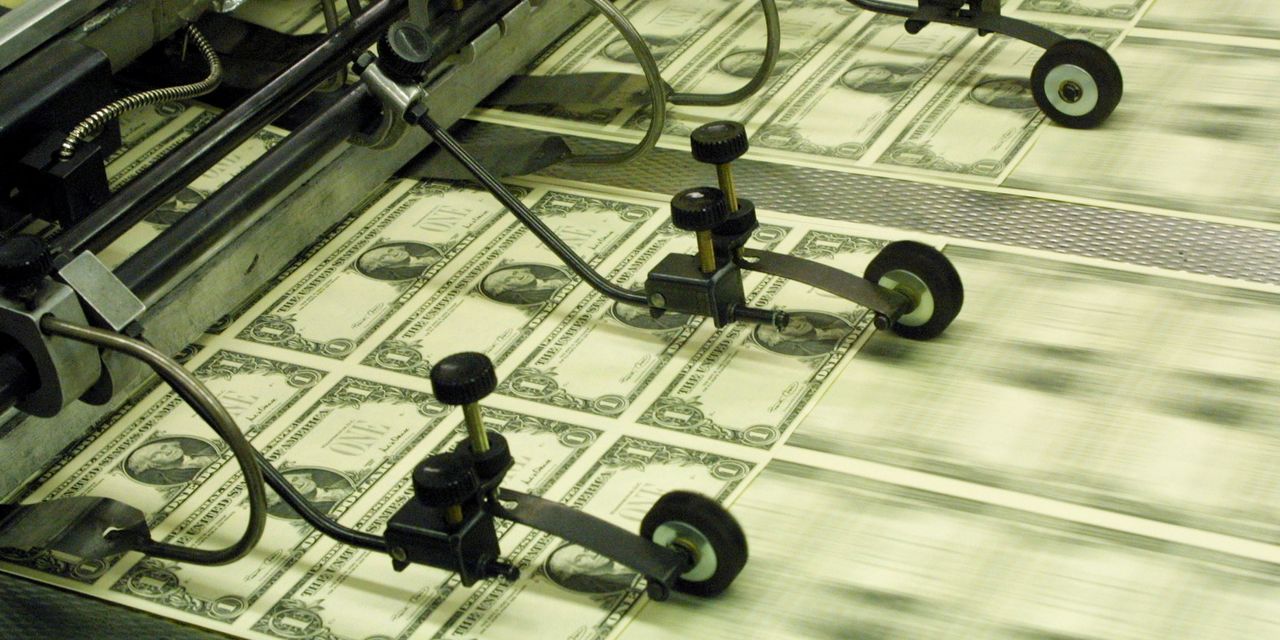Rising worries over global economic growth and the potential resurgence of inflation combined to lift the U.S. dollar versus major rivals Tuesday, analysts said, with a closely followed gauge of the currency’s strength trading at a nearly six-month high.
Weak economic data out of China and a round of disappointing readings from the eurozone helped lift the dollar, with the U.S. economy so far remaining resilient.
“The outperformance of the U.S. dollar is coming against a backdrop of rising optimism about the prospects for the U.S. economy, which prompted Goldman Sachs to say that the prospect of a recession in the U.S. has dropped to a 15% probability in its opinion,” said Michael Hewson, chief market analyst at CMC Markets UK, in a note.
Read: U.S. recession chances lowered by Goldman Sachs for the third time in four months
The ICE U.S. Dollar Index
DXY,
a measure of the currency against major currencies, was up 0.5% at 104.80, after trading as high as 104.91, its strongest since March 15, according to FactSet.
The euro
EURUSD,
the most heavily weighted currency in the index, slumped 0.7% to $1.0724, trading at a nearly three-month low, while the dollar rose 0.9% versus the Japanese currency
USDJPY,
to 147.77 yen, its highest since November. The British pound
GBPUSD,
was off 0.6% at $1.2561 after trading at its lowest since June.
The relatively upbeat outlook for the U.S. economy contrasts with gloomier developments elsewhere.
A Caixin survey showed China’s service sector expanded in August at its slowest pace in eight months, providing further evidence that the country’s postpandemic recovery was faltering.
Meanwhile, a eurozone survey showed that output in the bloc contracted at its fastest pace in nearly three years last month.
Also aiding the dollar, the resilient U.S. picture “doesn’t speak to the prospect of imminent rate cuts, unlike the situation in Europe where we’ve seen another set of disappointing PMIs, this time from the services sector as Spain and Italy follow German and France into contraction territory,” Hewson said.
It wasn’t all roses for U.S. markets on Tuesday, however.
U.S. stocks edged lower as investors returned from the Labor Day holiday. The Dow Jones Industrial Average
DJIA
shed around 140 points, or 0.4%, while the S&P 500
SPX
declined 0.3%.
Market watchers tied U.S. equity weakness to nagging worries that slowing economic growth and a surge in crude oil prices could raise the specter of stagflation — contrasting with the “Goldilocks” scenario of falling inflation and steady growth reflected in Friday’s August jobs report.
See: September brings pair of unwelcome developments for stocks
Oil prices jumped on Tuesday, with global benchmark Brent
BRN00,
West Texas Intermediate
CL00,
ending at 2023 highs after Saudi Arabia announced it would extend a voluntary production cut of 1 million barrels a day through the end of the year, alongside the extension of a supply cut by Russia.
Commodities Corner: Oil trades at 2023 highs. Are U.S. prices headed for $100?
From a technical perspective, the dollar index has broken above its recent highs and resistance in the range between 104.29 to 104.70, said Fawad Razaqzada, market analyst at City Index and Forex.com, in a note.
“This area was strong resistance back in May and at the back end of August. Now that the dollar has cleared this zone, any retest of this zone from above will need to be defended by the bulls to maintain control,” he wrote. “Judging by how the dollar has been performing of late, we would expect this to be the case until there is a fundamental trigger to change the dollar’s bullish trend.”
The index’s March high at 105.88 is the next target for bulls, he said.
Earlier: The U.S. dollar strikes back: What’s next after August rally
Read the full article here










Leave a Reply